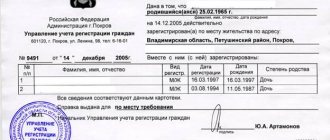Concept and types of residential premises
The concept of residential premises is clearly defined in the Housing Code. According to this concept, such a room must be isolated and also limited from other space. An isolated premises is a building (or a separate part thereof) that cannot be separated on legal grounds from other buildings. That is why part of the room does not belong to the concept of this room.
So what is included in the types of residential premises? According to the classification established by law, the following types of residential buildings are distinguished, which belong to the housing stock:
- residential building, as well as its separate part;
- apartment and part thereof;
- room.
In addition, this type of premises can be divided into those that are privately owned (both individuals and organizations) or owned by municipal entities, that is, state-owned. The concepts of specialized residential premises, which are part of the specialized housing stock, are also distinguished. These include the following types:
- premises for official purposes;
- rooms located in dormitories;
- premises of a fund that deals with the resettlement of refugees;
- residential premises of a maneuverable stock.
The inconsistency of modern Russian legislation is clearly reflected in the legal status of “residential buildings”.
The term “residential buildings” was introduced into circulation by Federal Law of April 15, 1998 No. 66-FZ “On gardening, vegetable gardening and dacha non-profit associations of citizens.” Article one of this law allows citizens to erect residential buildings on garden and dacha land plots without the right to register residence in them, as well as to erect auxiliary economic buildings and structures that ensure the operation of such residential buildings. Noteworthy is the fact that the given term “residential buildings” is not mentioned in the Housing Code of the Russian Federation and therefore these objects are an independent type of objects that are not classified by the legislator as objects of housing rights.
The Housing Code of the Russian Federation operates with the generic concept of “residential premises”, which includes the following types of objects: residential building, part of a residential building; apartment, part of an apartment; room (part 1 of article 16 of the Housing Code of the Russian Federation). The listed types of residential premises are objects of housing rights and are intended for permanent residence of citizens. The list of residential premises provided is closed. It should be noted that residential buildings built on dacha land plots (with the right to register residence) fully comply with the characteristics of the object of housing rights.
Unlike “residential premises,” residential buildings have an independent legal nature and a legal regime based on a special law (Federal Law No. 66-FZ of April 15, 1998).
So, what is the legal nature of the objects designated by the legislator as “residential buildings”. It should be immediately emphasized that the legal regime (purpose) of any capital construction project is initially predetermined by the purpose of the land plot on which it is located. Any other relationship between legal regimes is an exception. Land and town planning legislation is based on the priority of the intended purpose of land plots when determining the type of use of capital construction projects erected on these sites (Article 1, paragraph 5; Article 85, paragraph 3 of the Land Code of the Russian Federation, Article 1, paragraph 9; Art. 36 clause 1; article 51 clause 1 of the Town Planning Code of the Russian Federation). In other words, the purpose of the building depends on the purpose of the land. Before building anything on a plot of land, the developer must make sure whether what is planned corresponds to the legal status of the plot and, if not, whether it is possible to change this land legal status.
The legal regime of horticultural and dacha land plots provides for their use for growing fruit and vegetable crops, in combination with recreation. Due to this, the exploitation of residential buildings erected on these sites is limited to the purposes of ensuring the process of growing horticultural crops and recreation. The very use of the term “structure” in the phrase “residential building” characterizes the temporary, seasonal, unfounded nature of the building and emphasizes the inconstancy of the use of these buildings by people. If for owners of dacha land plots the Federal Law of April 15, 1998 No. 66-FZ provided for a legal alternative - to erect a “residential building” or “a residential building with the right to register residence”, then for garden land plots the law did not provide such an alternative.
At the same time, the existing reality is such that, regardless of the legal regime of a garden plot of land, comfortable residential buildings are often erected on the lands of gardening partnerships, which can hardly be called “buildings”. According to technical standards and construction characteristics (in fact), these objects are residential buildings, according to the legal regime (virtually) - residential buildings. In this case, the purpose is fundamentally different from the actual use. Citizens concerned about the housing problem have long found a practical solution to it in the construction of dwellings on garden lands. The absence of the need to prepare and approve design documentation for the development of garden and dacha land plots allows their owners to create residential properties suitable for permanent residence. The only legal documents limiting owners in their construction impulse remain the rules of land use and development - in territories included within the boundaries of populated areas and planning projects for the territory of a non-profit partnership - on agricultural lands. In such conditions, developers of lands of gardening partnerships are limited only in terms of parameters - a height of no more than three ground floors, an area of no more than 1500 sq.m., a setback from the boundaries of the site - by the amount provided for by the development rules or the planning project. Who, in this case, would deny themselves the pleasure of building a residential building on a garden plot. Only those who are limited in funds or imagination.
In recent decades, the territories of gardening partnerships have turned into low-rise residential communities. It is quite obvious that citizens want to eliminate legal differences in the absence of actual differences. Such attempts were made earlier, in the early 1990s, at the legislative level. Federal Law No. 4218-1 of December 24, 1992 “On the Fundamentals of Federal Housing Policy” gave citizens the right to re-register them as residential buildings with private plots on the right of private ownership, in the manner established by law (Part 3 of Article 9 of the mentioned Law). It is unknown what part of the citizens managed to take advantage of the opportunity provided, since with the introduction of the new Housing Code of the Russian Federation, from March 1, 2005, the Law of the Russian Federation “On the Fundamentals of Federal Housing Policy” lost force.
The legal possibility of classifying residential buildings suitable for permanent residence located on garden plots of land as housing stock was restored by Resolution of the Constitutional Court of the Russian Federation dated April 14, 2008 No. 7-P. The court considered the application of families of military personnel from the Krasnodar Territory, who appealed the provisions of paragraph two of Article 1 of Federal Law No. 66-FZ of April 15, 1998 “On gardening, gardening and dacha non-profit associations of citizens”, which prohibits registration at the place of residence in residential buildings built on lands as part of a gardening partnership. Based on the results of the consideration, the court found certain provisions of the mentioned article to be inconsistent with the Constitution of the Russian Federation. Article 1 of Federal Law No. 66-FZ of April 15, 1998 was declared unconstitutional in terms of limiting the rights of citizens to be registered “at their place of residence in a residential building suitable for permanent residence, located on a garden plot of land, which belongs to the lands of settlements.” As we can see, the formulation of lifting restrictions is accompanied by the court (stipulated) by certain conditions. Registration (registration) in a residential building is possible, provided: 1) if this building is “suitable for permanent residence” (read year-round), 2) if the garden plot of land is included within the boundaries of the populated area. Thus, the decision of the Constitutional Court did not change the legal status of “residential buildings” on garden plots. Their purpose related to gardening remains the same. Moreover, the legal differences between objects located on dacha plots and objects as part of gardening partnerships remain in force. For some garden residential buildings (not all), the court determined the possibility, through a commission procedure, to be classified as a housing stock. In other words, under certain conditions, objects that are not intended for permanent residence, but suitable for this purpose, can be used as residential. This applies only to garden residential buildings located on settlement lands. Consequently, the legal regime for horticultural land plots is expanding under certain conditions. In the event that a gardening partnership is located on agricultural land, the fact that the building is suitable for permanent residence does not remove restrictions on registration (registration) at the place of residence.
The Constitutional Court of the Russian Federation indicated that since housing legislation is the sphere of joint jurisdiction of the Russian Federation and the constituent entities of the Russian Federation (clause “k” of Part 1 of Article 72 of the Constitution of the Russian Federation), the constituent entities of the Russian Federation have the right to implement appropriate legal regulation by determining the procedure for the recognition of residential buildings on garden plots of land suitable for permanent residence.
It is certainly and obvious that the procedure for recognizing a residential building as suitable for permanent residence is comparable in complexity to obtaining permission to put a facility into operation. In the Krasnodar Territory, as part of the implementation of Resolution No. 7-P of the Constitutional Court of the Russian Federation dated April 14, 2008, the head of the administration (governor) of the Krasnodar Territory adopted Resolution No. 1185 dated December 29, 2009, regulating in detail the procedure and procedure for commission recognition of residential buildings as suitable for permanent residence.
The opportunity granted by the Constitutional Court to the authorities of the constituent entities of the Federation to legally regulate the issue of classifying garden residential buildings located within the boundaries of populated areas as housing stock, led in turn to changes in the procedure for simplified registration of rights to such objects. Order of the Ministry of Economic Development of Russia dated November 3, 2009 No. 447 approved a new form of declaration of real estate intended for registration of rights to objects that do not require obtaining a construction permit. The new declaration form came into force on January 26, 2010. The main difference of the new declaration form was the exclusion of the term “residential building” from the list of types of real estate. This is justified. The term “residential building” used in combination with the designation “purpose – non-residential” sounds incorrect to most non-specialists. Now, the person filling out the declaration has the right to independently designate the object belonging to him with such a name, in a line filled in manually. The developers tried to unite under one specific concept of “house” objects located both in dacha and garden plots. Since there is no legislative definition of “garden house” or “dacha house”, the developers used the definition of “house” contained in Rosstat Order No. 61 dated April 13, 2009 “On approval of census documents of the 2010 All-Russian Population Census.” According to the terminology of the said order: “A house is a building intended for permanent residence or temporary residence of people, depending on the functional purpose and for performing various types of production processes.” As you can see, both a “house” on a summer cottage and a “residential building” on a garden plot fall under this definition. The main difference between the first house (“dacha”) and the other (“garden”) is its purpose – “residential” or “non-residential”. The logic of developing a new declaration form - to simplify the classification of types of objects - was not correctly understood by everyone. For some citizens, the new declaration form has given rise to the erroneous idea that simply by filling out a declaration (by checking a box) one can legitimize a residential building built on a garden plot. The procedure for recognizing a residential building as suitable for permanent residence is the responsibility of the authorities of the constituent entities of the Federation. Rosreestr authorities, in the process of state registration of rights under a simplified procedure based on submitted declarations, must necessarily check the compliance of the declared objects with the intended purpose of the land plot.
State Registrar S.A. Kovalev
Residential buildings as types of residential premises
Based on the concept, a residential building is a building of an individually defined nature, which includes rooms and auxiliary premises. Ancillary premises are designed for residents to satisfy their everyday needs (we are talking about corridors, storage rooms, bathrooms, verandas, and so on).
It is worth noting that residential buildings may also belong to a specialized type of housing stock (in this case they will belong to government agencies or a municipality). Please note: an apartment building as a whole cannot be classified as a residential premises, since it also includes non-residential parts (for example, stairwells).
Division into types
Information about the types of premises is a component of the cadastral passport. On the cadastral plan, the specialist marks different areas with different colors. As a rule, red means residential premises, and blue means non-residential.
Having determined what the living space of an apartment is, it is necessary to stipulate exceptions; it does not include:
- niches less than 1.8 m high;
- a place located under the staircase, if the height of the stairs is less than 1.6 m (if the apartment has two levels);
- the area under the fireplace or stove (provided that they are functional);
- door openings;
- arches less than 2 m wide.
Thus, the living area is the sum of all rooms, with the exception of non-residential premises. Let's consider why it is necessary to divide the premises of an apartment by type.
First of all, on the basis of such calculations, utility bills for housing are calculated. The amount of heating fees directly depends on the living space.
The second payment, calculated on the basis of the area, is the cost of general house needs. The total payment for the house is divided proportionally among all residents, according to the size of their living quarters.
Apartment as a type of living space
This is another part of the housing stock, including specialized ones. Based on the concept, an apartment is a separate room in a multi-apartment building, which may include one or more rooms.
In addition, these premises also include auxiliary buildings (bathrooms, kitchens, etc.).
Another type of home concept is a room. This is the concept of a part of a house or apartment necessary directly for a person’s residence. In this case, such a room must be isolated, that is, not accessible.
Rooms may also belong to specialized housing stock (for example, a room in a dormitory).
Features of using residential premises
The main purpose of using such premises is the direct residence of citizens. In addition, it is possible to use the housing for carrying out activities of a professional nature, as well as individual entrepreneurship.
You can use a building for professional use if you live in it legally and do not violate the rights and interests of others. Please note: such use of an apartment, house or room should not violate sanitary standards, fire safety regulations, and so on.
It is not permitted to use an apartment or room for the purpose of locating industrial-type production there (we are talking about processing raw materials, creating new production means, and so on).
The right to use premises from the housing stock may arise on the following grounds:
- use by right of ownership;
- use under a rental agreement;
- use by membership in housing cooperatives.
Converting the status of a residential building to non-residential
Most often, relationships arise regarding changes in the status of a building, that is, the transfer of residential to non-residential. In order to carry out this procedure, an apartment, room or residential building must meet certain conditions:
- the apartment must be located on the ground floor (if the building is located higher, there should be no residential premises under it);
- the room must have a separate entrance;
- it is unacceptable to change the status of a house if it is subject to demolition;
- It is impossible to transfer part of the room to another status;
- the premises should not be located in the state specialized housing stock, otherwise such a transfer will be impossible.
The concept of transforming the status of non-residential premises implies compliance with a number of certain factors:
- the structure of the building must be reliable;
- there must be communications in the room (in some cases, their absence is allowed, for example, if the apartment is located in a populated area where there is no central water supply);
- the height of the ceiling covering must comply with utility standards (the exact value depends on the region, most often this value is 2.3 meters).
Difference No. 4. Tax burden
Often, owners who have purchased apartments are surprised to learn that, according to paragraph 1 of Art. 401 of the Tax Code of the Russian Federation, apartments do not belong to housing, but belong to other types of non-residential property. Accordingly, according to paragraphs 3 and 4 of Art. 403 of the Tax Code of the Russian Federation there will be other deductions, and tax benefits do not apply to non-residential premises.
Judicial practice on the legal status of apartments is contradictory. In court decisions you can even find the term “residential apartments”, for example, in the appeal ruling of the Voronezh Regional Court dated November 19, 2013 No. 33-5878. This concept is not approved by law.
Conversion of public housing into private
This transformation in housing legislation is called privatization. Premises can be privatized if they are provided under a social tenancy agreement; in addition, military personnel can also obtain ownership of a state apartment.
There are certain types of real estate that cannot be transferred from state ownership to personal property:
- rooms located in the dormitory (so-called specialized premises);
- the apartment if it is in a state of emergency;
- housing located on the territory of a military camp;
- service apartments that belong to the federal government or municipality.
Thus, a residential premises is a building (or part thereof) separate from other premises, which is recognized as immovable property. Such a structure must be suitable for permanent residence and comply with sanitary, fire and other standards. Regulation of relations associated with such objects is carried out by housing legislation. It is in accordance with the Housing Code of the Russian Federation that the alienation of premises or a change in its status is carried out.



